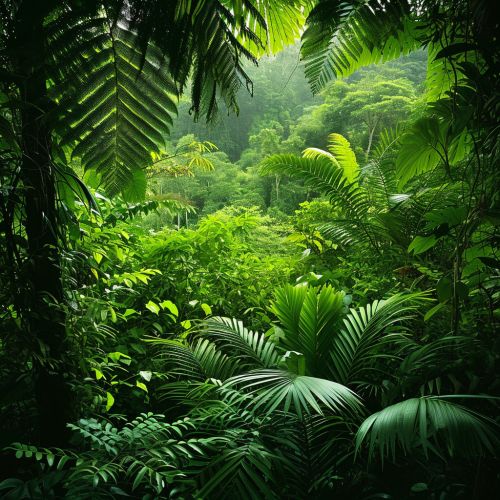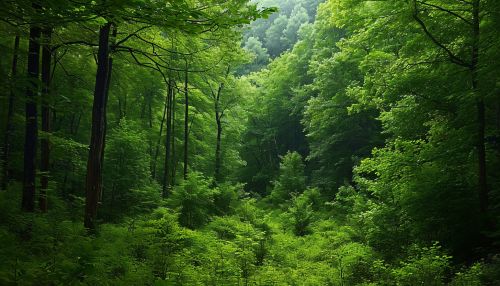Viridiplantae
Introduction
Viridiplantae, also known as green plants, is a clade of eukaryotic organisms that includes the green algae and land plants. This group is characterized by its members' ability to synthesize chlorophyll a and b, and store food as starch in their plastids. The Viridiplantae are a primary division of life on Earth, playing crucial roles in both terrestrial and aquatic ecosystems.
Evolution
The Viridiplantae lineage is thought to have diverged from other eukaryotes around one billion years ago. The first green plants were likely aquatic, resembling modern-day green algae. Over time, some lineages adapted to life on land, giving rise to the land plants or embryophytes. These terrestrial adaptations included the development of a cuticle to prevent water loss, and the evolution of complex reproductive structures.
Classification
The Viridiplantae are typically divided into two main clades: the Chlorophyta and the Streptophyta. The Chlorophyta includes the majority of green algae, while the Streptophyta includes a small group of freshwater algae and all land plants.
Chlorophyta
The Chlorophytes are a diverse group of green algae that includes both unicellular and multicellular species. They are primarily aquatic, found in freshwater and marine environments, but some species also live on land, in snow, or in symbiotic relationships with other organisms.
Streptophyta
The Streptophytes include a small group of freshwater green algae known as the Charophyceae, and all land plants. The Charophyceae are thought to be the closest relatives of the land plants, and share several key characteristics with them, including the presence of a multicellular haploid phase in their life cycle.
Morphology
Green plants exhibit a wide range of morphologies, from single-celled algae to complex multicellular organisms like trees. Despite this diversity, all green plants share certain common features. These include the presence of chloroplasts, which contain chlorophyll and are responsible for photosynthesis, and cell walls made of cellulose.
Photosynthesis
Green plants are photosynthetic, meaning they are able to convert light energy into chemical energy through the process of photosynthesis. This process involves the use of chlorophyll, a green pigment found in the chloroplasts of green plants, to absorb light and convert it into energy.
Reproduction
Green plants reproduce both sexually and asexually. In sexual reproduction, plants produce specialized cells called spores, which can develop into new plants. In asexual reproduction, plants can reproduce through fragmentation, where a piece of the plant breaks off and grows into a new plant, or through vegetative reproduction, where new plants grow from the roots, stems, or leaves of the parent plant.
Ecology
Green plants play a crucial role in the Earth's ecosystems. They are primary producers, meaning they produce their own food through photosynthesis and form the base of most food chains. They also play a key role in the carbon cycle, absorbing carbon dioxide from the atmosphere and converting it into oxygen and organic compounds.
Economic Importance
Green plants are of immense economic importance. They provide food, fiber, medicine, and fuel, and are also used for ornamental purposes. In addition, they play a crucial role in maintaining the Earth's climate by absorbing carbon dioxide, a greenhouse gas, from the atmosphere.
Conservation
Many species of green plants are threatened by habitat loss, climate change, and other human activities. Conservation efforts are therefore crucial to preserve the diversity and ecological roles of green plants.
See Also


